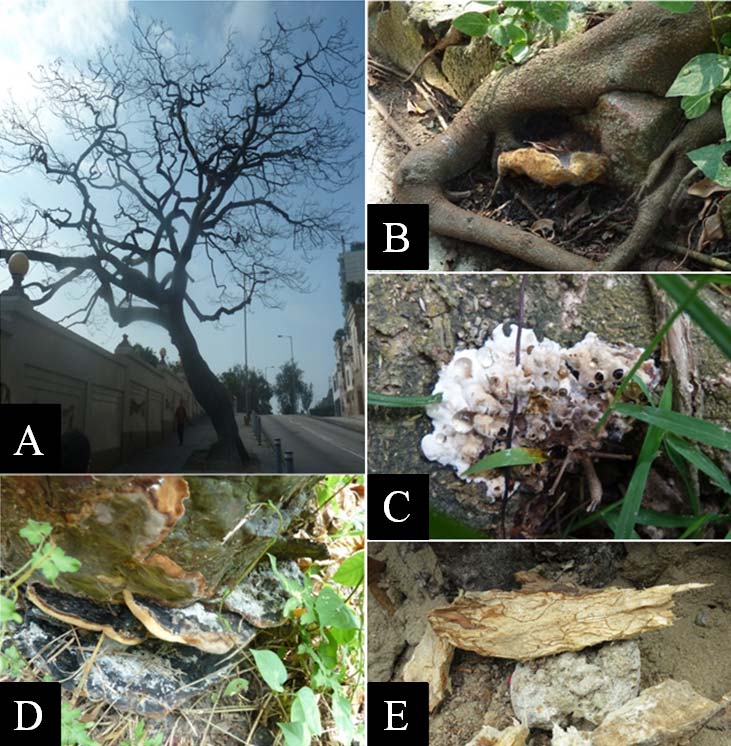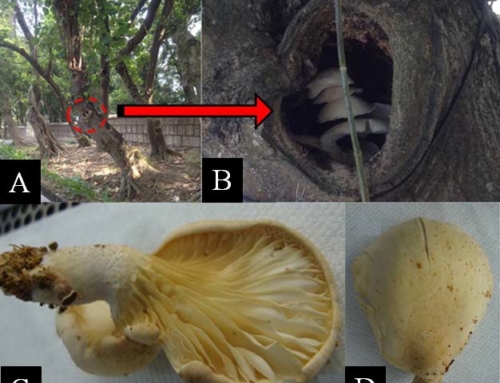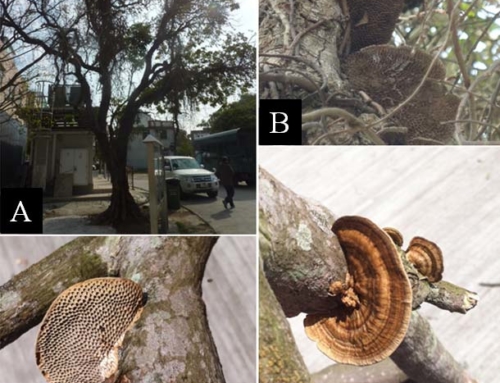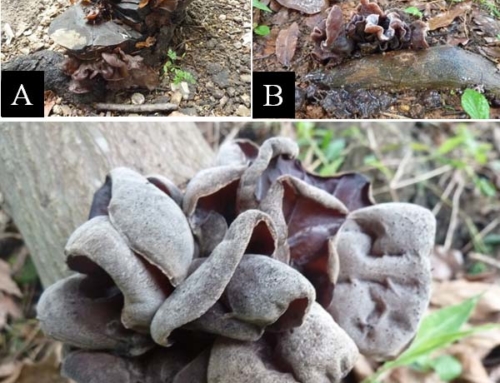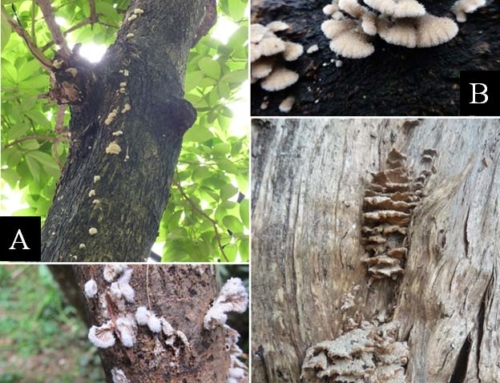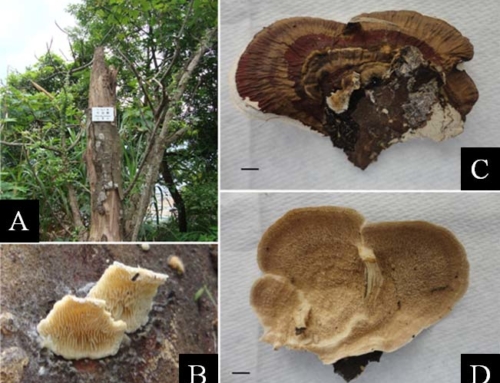Fruiting Body
Mature fruiting bodies perennial, usually from about 3 × 4 cm to 10 × 20 cm up to 40 × 75 cm, mostly solitary, sessile; pilei applanate, dimidiate or
appressed-reflexed, surface dark brown to almost black, glabrous, and narrowly but irregularly zonate, margin white then concolourous, obtuse; pore surface grayish brown to brown, irregular, polygonal, tubes in one to four layers, 1-3 mm long, similar in colour to the pore surface, tubes contrasted sharply with the deep chocolate brown of the context; spores 3-3.5 μm × 3.5-4.5 μm, broadly ellipsoid, smooth, thick-walled, hyaline.
Distribution and Host Range
This fungus is prevalent in tropical and subtropical regions in different parts of the world and has been found in Asian countries and areas such as Japan, China, Hong Kong Special Administrative Region (SAR), Macau SAR, Taiwan, Malaysia, Singapore as well as Central America, Africa and
Oceania.
Over 200 plant species in 59 families are known hosts to P. noxius worldwide. Locally, host trees species include Acacia confusa, Aleurities moluccana, Bauhinia spp., Bombax ceiba, Celtis sinensis, Delonix regia, Ficus microcarpa, Ficus benjamina, Ficus elastica, Gleditsia fera, and Melia azedarach etc. that grow on artificially created or disturbed sites along roadsides, on artificial slopes and in parks.
Signs and Symptoms
This fungus causes the Brown Root Rot (BRR) disease on trees. Infected trees would become structurally unstable and symptoms of the disease may emerge progressively through gradual thinning out of the crown, yellowing of the leaves, reduction in leaf size or shedding of leaves as a result of impaired water transportation function of the vascular system. Infected trees could die in a few months’ time but may survive another one to two years. Some infected trees would suffer quick decline in conditions and wilt rapidly. Their leaves would turn brown in colour and the trees could die within weeks, with wilted leaves of the dead trees remaining attached on the branches for months. The typical signs of BRR disease include fruiting bodies (i.e. primordial/mature stages), mycelial encrustation, soil aggregates and mycelial nets.
Pathology
P. noxius is a pathogenic fungus with strong virulence causing a white simultaneous rot usually on the roots and root collars of infected trees but could occasionally observed on locations higher up on trees. Wounds are not prerequisite for infection for this fungus as it can actively infect living trees. Infection could be by means of root to root contact and by dissemination of basidiospores from mature fruiting bodies.
Management and Control
Risk category: High (RED) Since this fungus could severely impact on the health and structural stability of the infected trees and there is currently no direct remedy for the BRR disease, removal of infected trees remains the most effective means to mitigate risk and control the spread of disease. Besides tree removal, all precautionary measures should be undertaken to prevent the spread of the disease to other healthy trees. The ‘Guidelines on Brown Root Rot Disease’ issued by the Tree Management Office provides comprehensive information on the BRR disease and its management strategy, which is available at www.trees.gov.hk.

